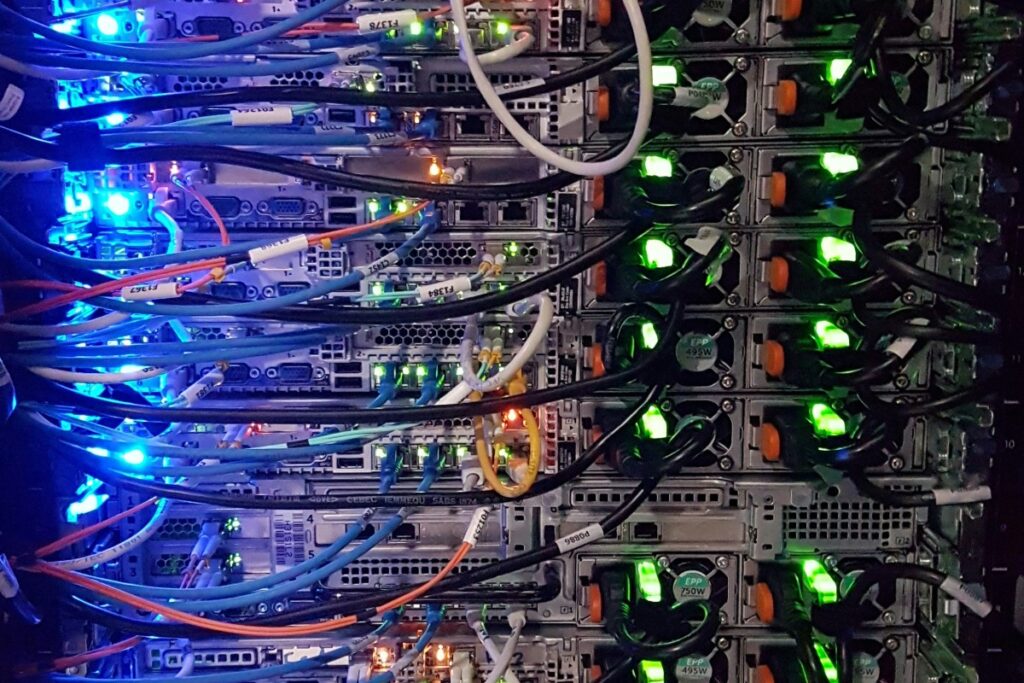In the modern world of software development, product time-to-market is becoming one of the critical success factors. Companies like Celadonsoft, that just did a Building Robust Node.js Applications guide, aim for high IT product efficiency and stability, implement DevOps CI/CD Strategies – a culture and a practice that integrates pipelines development and operation.
What is DevOps?
DevOps is an approach to IT infrastructure development and management based on automation, continuous integration, delivery, and deployment. The main goal of DevOps CI/CD Strategies are to accelerate the software creation and deployment process, not at the expense of its quality and reliability.

The methodology erases the boundaries between development teams and operations professionals, offering close cooperation, automated testing and monitoring throughout the software’s lifecycle.
Main DevOps Principles
DevOps CI/CD Strategies are built on several fundamental principles:
- Automation – minimize manual steps to accelerate development, testing, and deployment.
- Continuous integration (CI) – merging of code from different branches into a single database with additional automatic testing.
- Continuous delivery (CD) – automatically prepares the code for deployment in different environments.
- Monitoring and feedback – ongoing monitoring of system performance and stability, with the ability to react quickly.
- The culture of collaboration – a common working space, transparent processes and elimination of barriers between teams.
Why is DevOps Important?
Previously, developers and maintenance specialists worked separately: the former wrote the code, the latter – ensured its operability. This has led to frequent delays, conflicts and quality issues with the software. DevOps solves these problems by allowing:
- Reduce time to market through automation and unified processes.
- Reduce the number of failures through continuous testing and monitoring.
- Increase stability and security through quick identification and elimination of vulnerabilities.
- Improve teamwork collaboration, eliminating the gap between developers and operations staff.
Continuous Integration
Development speed and product reliability are two of the most vital conditions for being successful in today’s agile IT era. This is why the phrase continuous integration (CI) is now a norm for effective software development.
What Is Continuous Integration?
Continuous integration is a DevOps CI/CD Strategies where code modifications are regularly committed to the main branch of the repository. Early detection and speed of development via automated testing and constant feedback are the main aims of CI.
The core process:
- The developer accepts modifications in the repository.
- The CI environment runs automatic checks and code checks.
- If there are successful tests, the changes are committed to the main branch.
- If something goes wrong, the developer is immediately informed and can correct it.
Why is CI Necessary?
In the past, software development was usually coupled with so-called “integration hell”: when multiple developers’ changes were merged in a few weeks (or even months), there were numerous conflicts and bugs slowing down the release process.
Continuous integration fixes this issue by giving the team:
- Quick feedback – errors caught at an early stage, simpler to fix.
- Product stability – auto tests avoid vital bugs.
- More rapid development – reduced time for manual verification and code merge.
Common CI Tools
There is a variety of tools used in IC automation, including:
- Jenkins is a versatile and common open-source alternative.
- GitLab CI/CD is a built-in solution to the GitLab platform.
- GitHub Actions is a convenient CI/CD system inside GitHub.
- CircleCI and Travis CI are prominent cloud services with customizable settings.
Continuous Delivery
Continuous delivery (CD) is a DevOps CI/CD Strategies that emphasizes automating code delivery from development to deployment readiness. Unlike continuous deployment (CD), where the code is released automatically to production, CD assumes that the release is on demand but, at any point in time, can be started without making additional changes.
The aim of continuous delivery is to ensure that new versions of the application can be delivered quickly, reliably and predictably. This reduces time to market, improves code quality and increases development flexibility.
Difference Between Continuous Integration and Delivery
Continuous Integration (CI) and continuous delivery (CD) are often mentioned together, but they have different purposes:
- CI automates the process of assembling code, testing, and integration, which helps the team catch errors early.
- CD extends the CI by automating deployment preparation to make releases whenever possible.
I.e., CI handles the integrity and quality of the code, and CD handles its readiness to release.
CD Principles and Tools
There are several important principles that must be adhered to in order to have effective continuous delivery:
- Deployment automation – less human intervention to deliver code.
- Continuous testing – maintaining stability of new assemblies by automatic testing.
- Uniformity of environments – development, test, and production infrastructure should be as similar as possible.
- Quick feedback – instant alert about potential problems with the new version.
CD in practice is executed by utilizing different tools, for instance:
- Jenkins is a general-purpose automation server that supports CI/CD.
- GitLab CI/CD is a native GitLab tool for seamless integration and delivery.
- ArgoCD is an automated deployment tool for Kubernetes environments.
- Spinnaker is a powerful deployment management system.
Benefits of Implementing CD
Companies that implement continuous delivery, for example Celadonsoft, have several benefits:
- Release speed – automation reduces the duration between deployment and development.
- Reduced errors – continuous testing and consistency of the environment avoid surprises.
- Enhanced reliability – deployment becomes predictable and safe.
- Flexibility and scalability – CD is flexible to different work processes and technologies.
Continuous Deployment
Celadonsoft: “Continuous Deployment (CD) refers to the practice that comes after continuous delivery. Unlike the traditional approach where a release must be manually intervened, CD involves pushing the code automatically to production once it has passed all tests.”
This means new functionality, fixes, and improvements are pushed to end users in close to real time with no intervention by a human. This allows the development process to be as fast and effective as it possibly can.
Distinction Between Continuous Delivery and Deployment
“Continuous delivery” and “continuous deployment” are often used synonymously. Main difference:
- Continuous Delivery – code is deployable, but production introduction is done manually.
- Continuous Deployment – the code automatically deploys to production without human intervention.
Pros and Cons of Auto-Deployment
Pros:
- Super-fast releases. You can release patches daily or multiple times a day.
- Error reduction. The automated Plug-ins reduce the involvement of the human factor.
- Rapid feedback. Rapid release of new features allows you to test hypotheses and react to customer feedback earlier.
Risks:
- Strong automated tests are required. If testing is not well-developed, it can miss severe bugs.
- Needs for monitoring. Developers should monitor the production metrics in time to solve the problems in time.
- Need for a good DevOps culture. Without the direct communication between the developers’ teams, the testers, and CD administrators can lead to catastrophe.
How to Prepare CD Implementation?
- Have a good testing framework. 100% automated tests is a must.
- Have flag feature flags. They allow you to control the deployment of individual functions and restrict risks.
- Implement a Blue-Green Deployment or Canary Releases approach. This will allow safely roll out updates.
- Provide monitoring and logics. Actual tracking of the production metric will allow for quick detection of problems.

CI/CD Tools in DevOps
CI/CD implementation is not possible without appropriate tools. The stability, speed, and security of integration and deployment processes rely on the selected technology stack.
Essential CI/CD Tools
- Jenkins – a lightweight, open-source automation server with custom Web page support.
- GitLab CI/CD – built-in CI/CD tools, convenient to use with Git commands.
- GitHub Actions – automation on GitHub with the option to trigger and custom workflow.
- CircleCI is a cloud-based CI/CD with scalable PILPs.
- Travis CI is a widely used tool for automated testing and emergency.
Containerization and Orchestration: Key Technologies
To achieve effective CI/CD, it is essential to be able to control the environment. Here are some assistance:
- Docker is a standardized containerization tool that makes application deployment and scaling easier.
- Kubernetes – a great container orchestration tool, particularly valuable when dealing with microservices.
Best Practices with CI/CD Tools
- Automate everything. The less manual work, the better process stability.
- In staging, test updates prior to sending to production.
- Monitor the logbooks and metrics. Monitoring + Logging = real-time response to potential problems.
- Use infrastructure as code (IaC). Terraform and Ansible along with other tools take care of configuration management through automation.
CI/CD is not a tool, but a mindset. Without defined processes and DevOps culture, even the best technology will not have the intended effect.
Practical Recommendations for CI/CD Implementation
CI/CD introduction is not just an automation of processes, but an entire culture that requires open planning, a correct choice of tools and DevOps culture in the team formation. Here are the primary actions to apply CI/CD to your project.
Step 1: Defining Goals and Requirements
Before you roll it out, make sure you understand what the tech and business people need. Answer:
- What to automate first.
- Testing and deployment requirements.
- Metrics and performance metrics to be used.
Step 2: Select Tools
You will choose the tools based on what technology stack you have in your project. Main components:
- Version control systems: Git (GitHub, GitLab, Bitbucket).
- CI/CD Servers: Jenkins, GitHub Actions, GitLab CI/CD, CircleCI.
- Containerization: Docker.
- Orchestration of containers: Kubernetes.
- Monitoring and logging: Prometheus, Grafana, ELK Stack.
Step 3: Configure the CI/CD Plugin
Properly configured a plugin consists of the following steps:
- Assembly – automatic artifacts’ generation (Docker-images, binary files etc. etc.).
- Testing – initiate unit, integration, and load tests.
- Security scan – code and dependency vulnerability scanning.
- Deployment to test environments – testing of the application in near-production conditions.
- Automatic production roll-out (CD) – after test run successfully.
Step 4: Monitoring and Feedback Implementation
Monitoring is necessary to avoid CI/CD being a black box. It should be monitored:
- Stack time.
- Number of failed designs.
- Deployment frequency.
- Performance metrics and error logics.
Step 5: Optimize Processes and Remove Bottlenecks
Following the initial stage of implementation, review metrics and discover bottlenecks:
- Long-running tests? Perhaps include a parallel test.
- High frequency of failures? Review the quality of the tests and configuration.
- Long deployment? Think about default strategies (canary deployment, blue-green, etc.).
Conclusion
Enactment of CI/CD is the very first step for development velocity maximization, quality of releases, and business quickness. Success, however, demands not only proper tools but proper approach too:
- Clarity of the targets and selection of proper technologies.
- Optimization of CI/CD chipsets upon security and test requirements.
- Continual checks on processes, clearing blockers.
- Formation of DevOps-culture within team: automation, collaboration, ownership.
Firms that successfully adopt CI/CD enjoy enormous competitive benefits: rapid new business deployments, low failures and high responsiveness to market shifts. If your team is new to DevOps, the trick is to aim for small iterations, measure outcomes and constantly refine processes.


